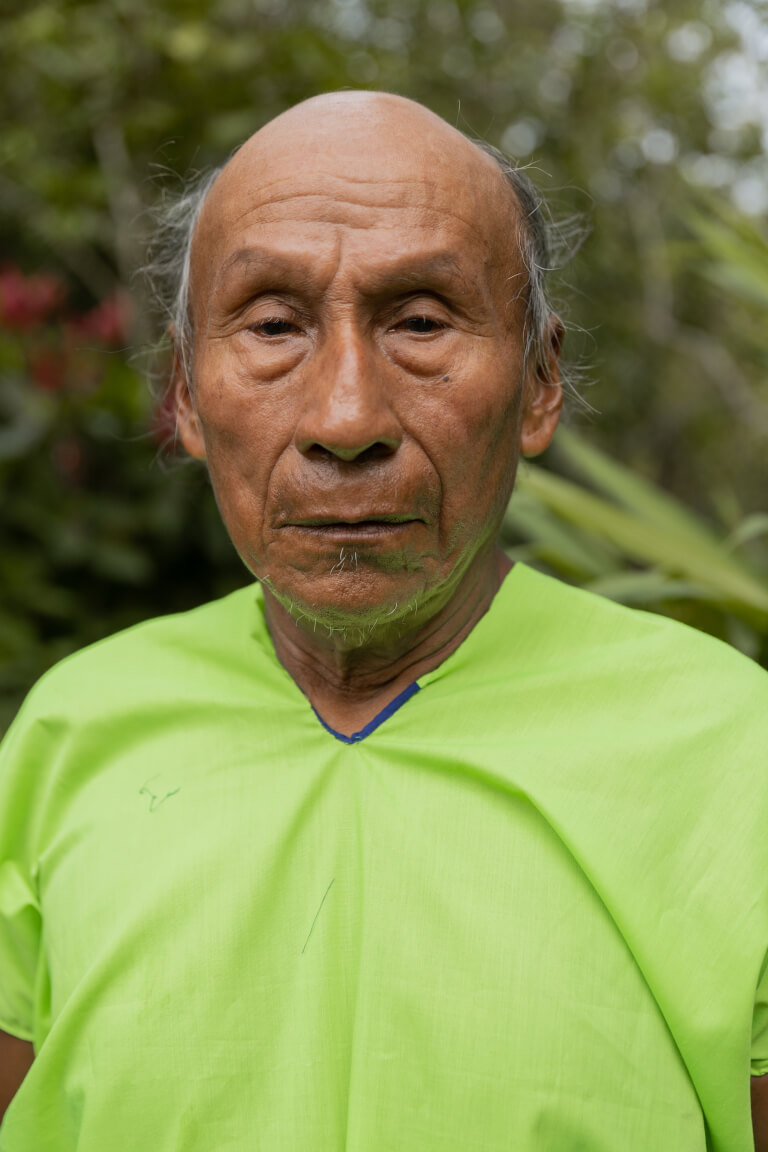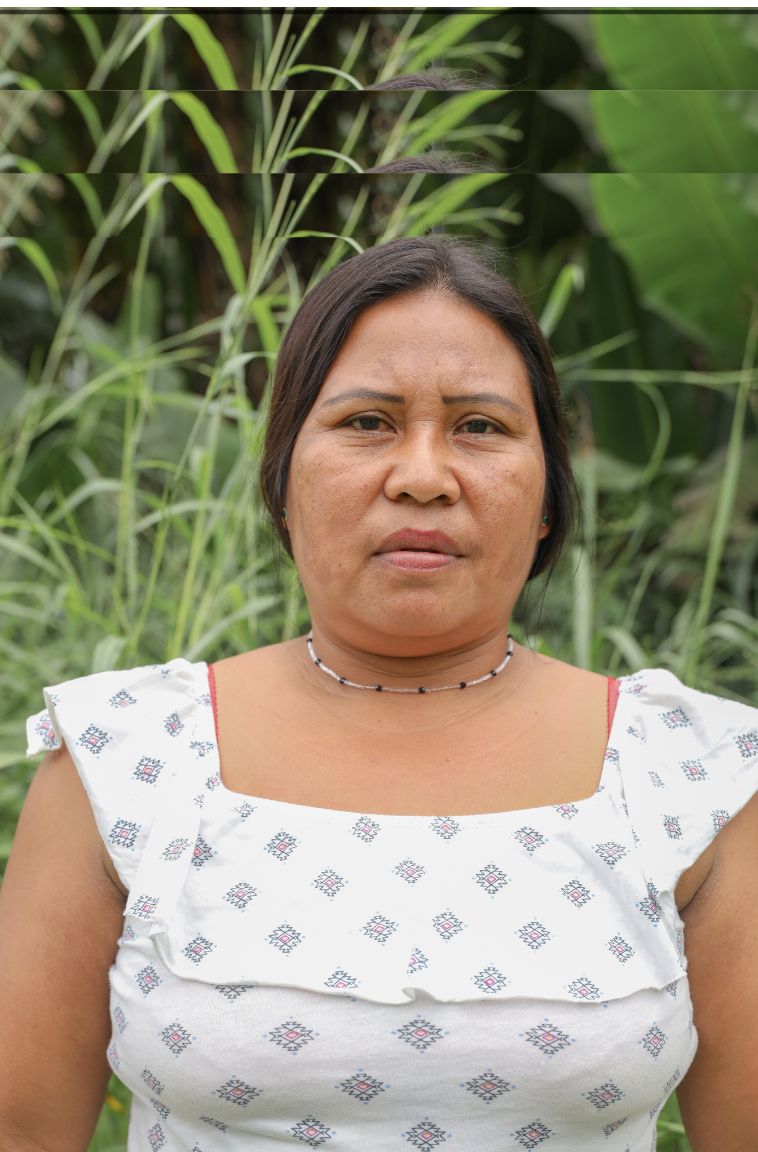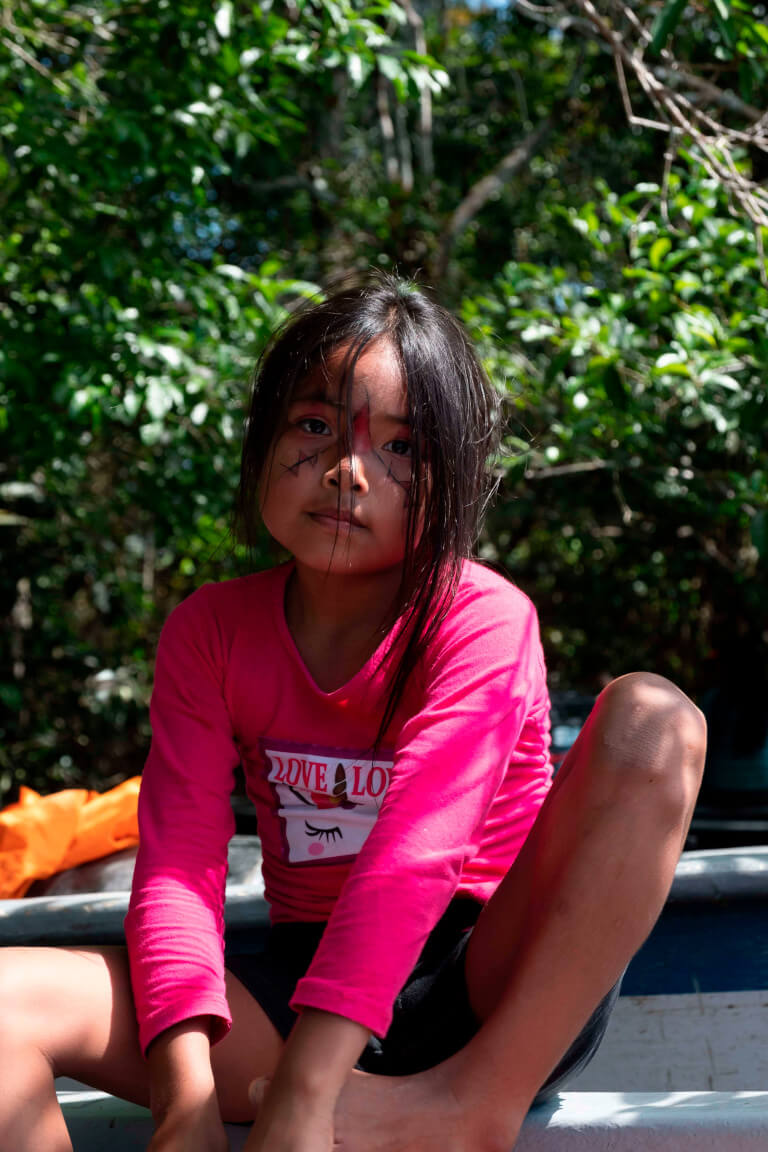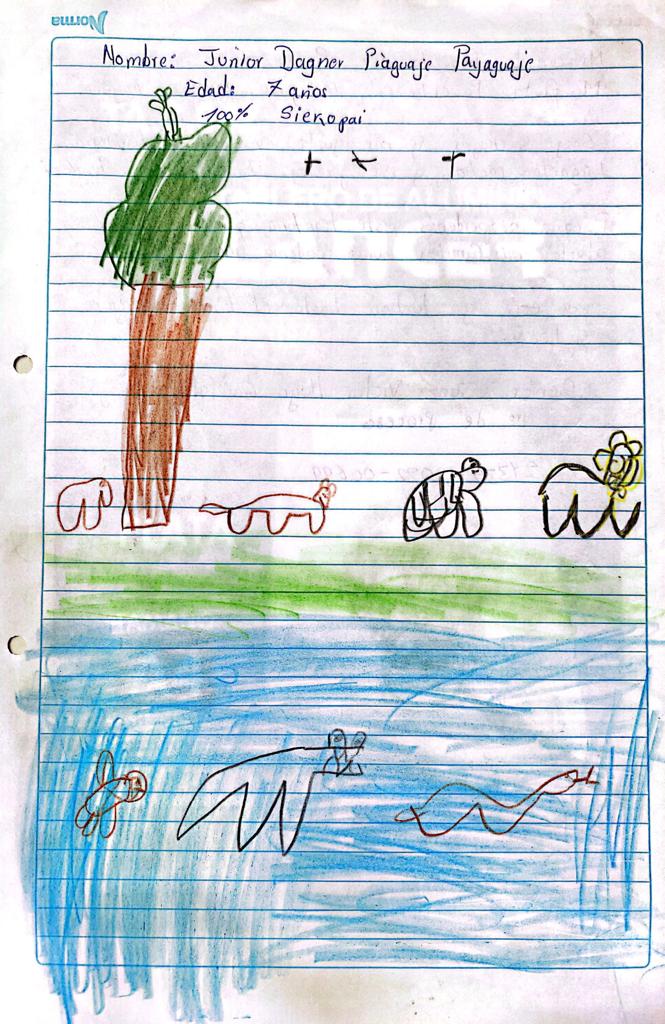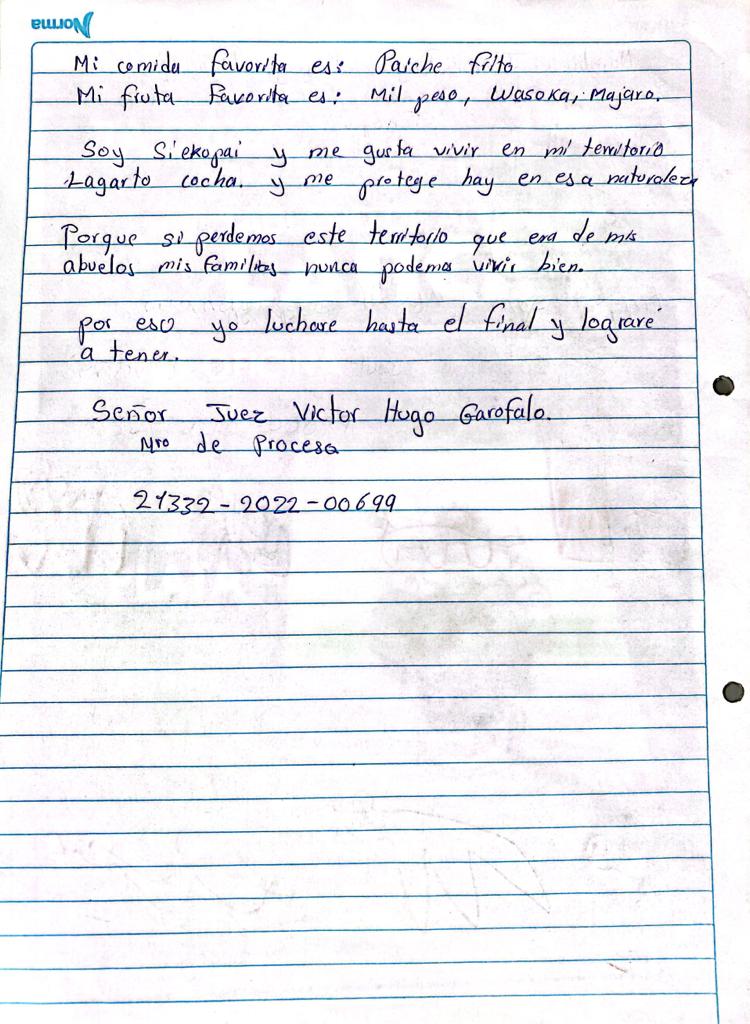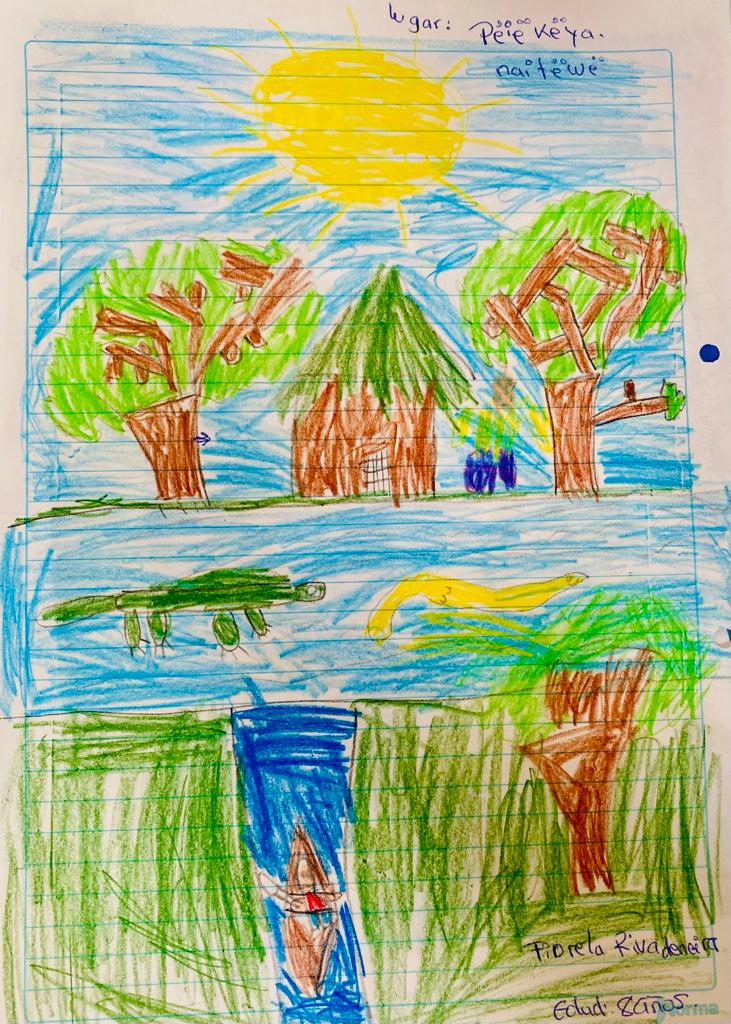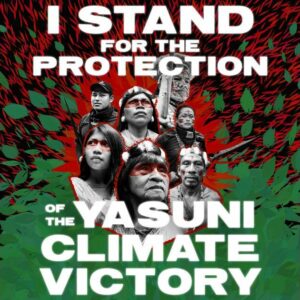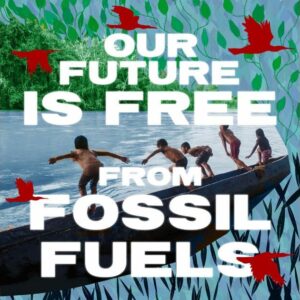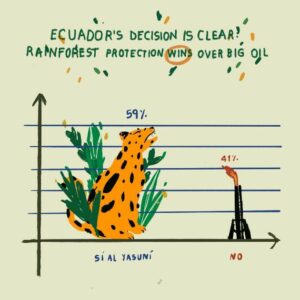What does it take to reclaim ancestral lands that you were systematically dispossessed of? And what does it mean when your people’s very cultural and physical survival depends upon it? The Siekopai (Secoya) nation of Ecuador, a small Upper Amazonian nation located in the Western Amazon that numbers just over 800, is grappling with that question right now.
Pë’këya (Lagartococha), a labyrinthine network of lagoons, slow-moving creeks, and flooded forests, is the Siekopai’s traditional homeland and spiritual heartland. In the 1940s, during a border dispute between Ecuador and Peru, the area was militarized and the Siekopai were forced out on both sides of the border, and later prevented from returning when the Ecuadorian government assumed ownership over Pëkëya by creating a National Park in the area in the 1970s.
In an effort to regain control of their land, the Siekopai decided to take the Ecuadorian government to court in September over its failure to recognize the nation as the ancestral stewards of Pë’këya. Plaintiffs in the case include elders who seek to recover their spiritual homeland and ensure the physical and cultural survival for future generations, youth who seek to revitalize their culture, and children who want to learn and grow up with a sense of Siekopai identity and knowledge.
In January 2023, a provincial judge will finally hear oral testimony from elders, leaders, youth and children. Maps, archaeological evidence and even paintings will also be presented, identifying the Siekopai as the ancestral owners of the area. In anticipation of the hearing, we share the profound perspectives of community members. They have a clear message for the judge, the court, the Ecuadorian government, and the world: Pë’këya is essential for Siekopai survival and the time for their land to be given back is far overdue.
Voices of the Elders
Roberto Piaguaje, 66 years old
Pë’këya is an extensive territory that includes the Putumayo, the Napo, and the Aguarico rivers. All of this territory was inhabited by our grandparents. However, Ecuador’s Ministry of the Environment and other actors, who have no direct knowledge of this area, left us with only a small fraction of our ancestral territory that does not allow sufficient space for us to exist as an Indigenous nation.Inhabiting Pë’këya is necessary for the survival of our culture. We use the palms there to weave chambira fibers into hammocks and traditional women’s bags (shigras). Pë’këya is also the homeland of our great yagé healers, the representatives who transmit our tradition. We have been fighting so that our right to our traditional territory be respected. In the 1990s and 2000s we began to make greater use of data in the fight for our territory. Elders and youth are united in this struggle so that we can recover Pë’këya and continue living as Siekopai people.
Roberto Piaguaje, 66 years old
Pë’këya is an extensive territory that includes the Putumayo, the Napo, and the Aguarico rivers. All of this territory was inhabited by our grandparents. However, Ecuador’s Ministry of the Environment and other actors, who have no direct knowledge of this area, left us with only a small fraction of our ancestral territory that does not allow sufficient space for us to exist as an Indigenous nation.Inhabiting Pë’këya is necessary for the survival of our culture. We use the palms there to weave chambira fibers into hammocks and traditional women’s bags (shigras). Pë’këya is also the homeland of our great yagé healers, the representatives who transmit our tradition. We have been fighting so that our right to our traditional territory be respected. In the 1990s and 2000s we began to make greater use of data in the fight for our territory. Elders and youth are united in this struggle so that we can recover Pë’këya and continue living as Siekopai people.
Maruja Payaguaje, 79 years old
We were displaced and forced to move to an area that does not represent our ancestral territory.
Pë’këya is our sanctuary; it is the core of our territory, where there are abundant fish. Just as the mestizos have their customs related to the use of their properties and belongings, we have always lived by fishing and hunting, and making use of the plants and trees. This place means everything to us, as if it were made precisely for us. This is because the area was cultivated and cared for by our grandparents; that’s why we want to go back and make use of those plants.My grandfather and my father taught me that this is our territory. We cannot let this territory be forgotten by our people, because our spirituality is based there. That is why I say: I am here now, but when my time comes to die, I will return to Pë’këya to attain the immortality that our grandparents always spoke of. We have never forgotten the historical sites and the names of the rivers. For example, we call this place Pë’këya, and we call another place Emuña. These are the names given to these places in Paikoka, our language, and that is why we we will never forget that this territory is ours.
Pë’këya gives meaning to our existence. It is the place where our ancestors lived, the area where the Piaguaje and the Payaguaje surnames come from. This is why our generation has the moral obligation to continue fighting for our territory.
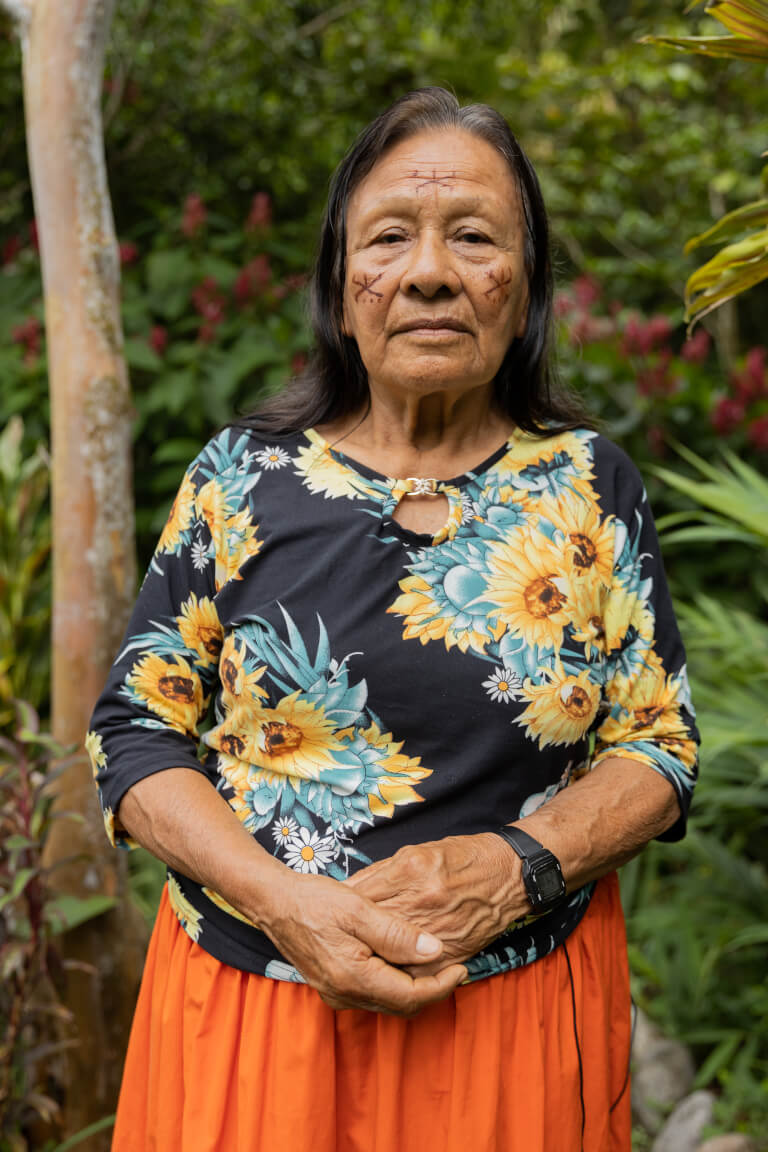
Maruja Payaguaje, 79 years old
We were displaced and forced to move to an area that does not represent our ancestral territory.
Pë’këya is our sanctuary; it is the core of our territory, where there are abundant fish. Just as the mestizos have their customs related to the use of their properties and belongings, we have always lived by fishing and hunting, and making use of the plants and trees. This place means everything to us, as if it were made precisely for us. This is because the area was cultivated and cared for by our grandparents; that’s why we want to go back and make use of those plants.My grandfather and my father taught me that this is our territory. We cannot let this territory be forgotten by our people, because our spirituality is based there. That is why I say: I am here now, but when my time comes to die, I will return to Pë’këya to attain the immortality that our grandparents always spoke of. We have never forgotten the historical sites and the names of the rivers. For example, we call this place Pë’këya, and we call another place Emuña. These are the names given to these places in Paikoka, our language, and that is why we we will never forget that this territory is ours.
Pë’këya gives meaning to our existence. It is the place where our ancestors lived, the area where the Piaguaje and the Payaguaje surnames come from. This is why our generation has the moral obligation to continue fighting for our territory.
Roque Piaguaje, 69 years old
Lagartococha is the place where I was born, where my grandparents lived, and where the bones of my grandparents rest.The government stripped us of our territory. They waged wars and pursued conflicts that forced us to leave our lands and to move to limited areas. We were displaced despite the fact that we had nothing to do with the conflict.
Pë’këya is the place that defines our concept of a good life. I regularly go to the lagoons of Pë’këya to fish for mojarras, to feel the fresh air and the harmony, peace, and tranquility there, and to be in relationship with the energies and spirits of nature.
After so many years of struggle, we hope to achieve justice. Pë’këya is a territory that should never be sold or traded away. It is the territory that represents our children’s future, so that our culture will not be lost and will continue to exist in the country and in the world. We are not trying to make a land grab or to displace anyone, of course not! This territory has always been Siekopai. Without our territory, our life as a people would be over. That is why we want to continue transmitting our knowledge and identity to the new generation that is now struggling and under threat. We as Siekopai elders want to maintain our culture and to ensure our existence for the next generations. This will only be possible if our young people return to our territory, to continue living as Siekopai.
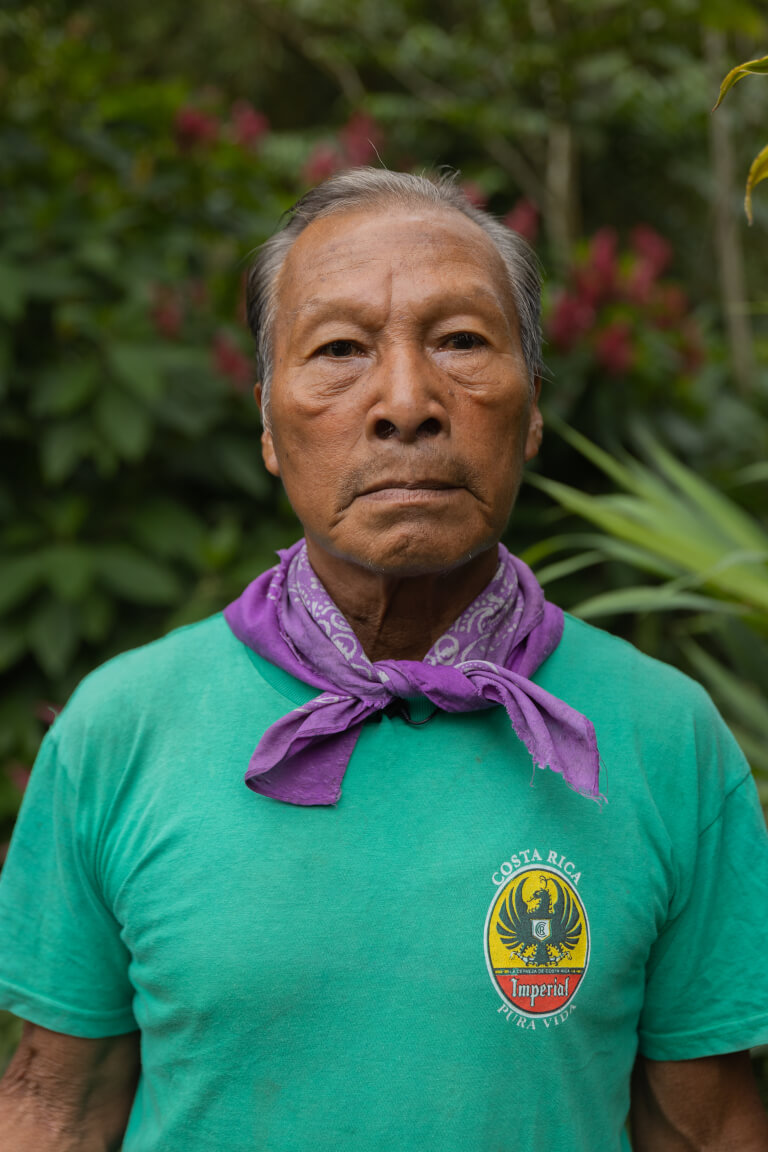
Roque Piaguaje, 69 years old
Lagartococha is the place where I was born, where my grandparents lived, and where the bones of my grandparents rest.The government stripped us of our territory. They waged wars and pursued conflicts that forced us to leave our lands and to move to limited areas. We were displaced despite the fact that we had nothing to do with the conflict.
Pë’këya is the place that defines our concept of a good life. I regularly go to the lagoons of Pë’këya to fish for mojarras, to feel the fresh air and the harmony, peace, and tranquility there, and to be in relationship with the energies and spirits of nature.
After so many years of struggle, we hope to achieve justice. Pë’këya is a territory that should never be sold or traded away. It is the territory that represents our children’s future, so that our culture will not be lost and will continue to exist in the country and in the world. We are not trying to make a land grab or to displace anyone, of course not! This territory has always been Siekopai. Without our territory, our life as a people would be over. That is why we want to continue transmitting our knowledge and identity to the new generation that is now struggling and under threat. We as Siekopai elders want to maintain our culture and to ensure our existence for the next generations. This will only be possible if our young people return to our territory, to continue living as Siekopai.
Miguel Payaguaje, Siekopai spiritual leader, 56 years old
Lagartococha is the origin place for the Siekopai people. Other indigenous peoples also recognize that this is where the Siekopai God, known as Ñañë Paina, performed miracles. This God lived with the Siekopai people and ushered their world, and the beings that inhabit it, into existence. Lagartococha is the gateway to the aquatic and the supernatural spiritual worlds. This is where an open pathway (Nuni ma’a) exists between the earthly and heavenly worlds. Our sages, through the strength of their knowledge, opened this pathway so that all Siekopai people may reach their final resting place after they die. Unfortunately, our sages are dying out, although there are young people who are practicing to learn our traditions. The spiritual importance of this area allows them to carry out this cultural practice. All 800 Siekopai people, including men, women, elders, adults, youth, and children, are united in this fight.
Miguel Payaguaje, Siekopai spiritual leader, 56 years old
Lagartococha is the origin place for the Siekopai people. Other indigenous peoples also recognize that this is where the Siekopai God, known as Ñañë Paina, performed miracles. This God lived with the Siekopai people and ushered their world, and the beings that inhabit it, into existence. Lagartococha is the gateway to the aquatic and the supernatural spiritual worlds. This is where an open pathway (Nuni ma’a) exists between the earthly and heavenly worlds. Our sages, through the strength of their knowledge, opened this pathway so that all Siekopai people may reach their final resting place after they die. Unfortunately, our sages are dying out, although there are young people who are practicing to learn our traditions. The spiritual importance of this area allows them to carry out this cultural practice. All 800 Siekopai people, including men, women, elders, adults, youth, and children, are united in this fight.
The Voices of Siekopai Youth and Children
Mariela Piaguaje, 29 años
“As a woman and as a mother, I want our territory to be returned to us because our ancestors lived there. I want my children, and the children of our people, to know the places where our ancestors made their ceramics and maintained the knowledge that has been passed down for our children to learn.”
Mariela Piaguaje, 29 años
“As a woman and as a mother, I want our territory to be returned to us because our ancestors lived there. I want my children, and the children of our people, to know the places where our ancestors made their ceramics and maintained the knowledge that has been passed down for our children to learn.”
Hernan Payaguaje, 42 years old
Lagartococha contains the living memory of our identity, culture, and knowledge as Siekopai people. It has always been the meeting place for gatherings of spiritual leaders for great ceremonies. In our traditional practice, this is how a healthy relationship between nature and human beings is maintained. Lagartococha is the central link where a more intimate connection is established with the spirits, in order for Siekopai people to learn and receive teachings. It is also the focal point for different Siekopai communities to come together from the areas of the Putumayo and Napo rivers, as well as the headwaters of the Aguarico. Recovering the ancestral territory of Lagartococha will allow these cultural roots to be revived and rejuvenated.There are endemic species that can only be found in Lagartococha; for example, the kënaputiya and paiche fish, among others. As for wild fruit, ësëpoo, wasoka, apita, su’teruru, and many others are harvested and collected. Various plant species in Lagartococha are also used to make baskets, and vines are used for the construction of homes. We also collect medicinal plants, and this is the only place in our area where quinine, which is used against malaria, is available. During the Covid-19 pandemic, this is the medicine that saved the Siekopai and other communities.

Hernan Payaguaje, 42 years old
Lagartococha contains the living memory of our identity, culture, and knowledge as Siekopai people. It has always been the meeting place for gatherings of spiritual leaders for great ceremonies. In our traditional practice, this is how a healthy relationship between nature and human beings is maintained. Lagartococha is the central link where a more intimate connection is established with the spirits, in order for Siekopai people to learn and receive teachings. It is also the focal point for different Siekopai communities to come together from the areas of the Putumayo and Napo rivers, as well as the headwaters of the Aguarico. Recovering the ancestral territory of Lagartococha will allow these cultural roots to be revived and rejuvenated.There are endemic species that can only be found in Lagartococha; for example, the kënaputiya and paiche fish, among others. As for wild fruit, ësëpoo, wasoka, apita, su’teruru, and many others are harvested and collected. Various plant species in Lagartococha are also used to make baskets, and vines are used for the construction of homes. We also collect medicinal plants, and this is the only place in our area where quinine, which is used against malaria, is available. During the Covid-19 pandemic, this is the medicine that saved the Siekopai and other communities.
Andrea Payaguaje, 12 years old
Since I was little, I have traveled to Lagartococha and I like it a lot. My grandfather told me many stories and very important facts that I did not know about before. He always told me that Lagartococha is our territory, and that is where our ancestors live. Those stories inspire me a lot; I want to travel throughout the area and learn more. For children like me, Lagartococha is the place where we can learn about our history, and about very important facts of life in the jungle as a Siekopai person. Lagartococha contains great richness to meet the needs of Siekopai women. My mother and grandmothers always go there to find a special kind of clay for ceramics. They also harvest the bark of a certain kind of tree to mix with clay that is essential to the traditional ceramics made by Siekopai women.
Andrea Payaguaje, 12 years old
Since I was little, I have traveled to Lagartococha and I like it a lot. My grandfather told me many stories and very important facts that I did not know about before. He always told me that Lagartococha is our territory, and that is where our ancestors live. Those stories inspire me a lot; I want to travel throughout the area and learn more. For children like me, Lagartococha is the place where we can learn about our history, and about very important facts of life in the jungle as a Siekopai person. Lagartococha contains great richness to meet the needs of Siekopai women. My mother and grandmothers always go there to find a special kind of clay for ceramics. They also harvest the bark of a certain kind of tree to mix with clay that is essential to the traditional ceramics made by Siekopai women.
Junior, 7 years old: “If we lose this territory that belonged to my grandparents, our families will never be able to live well.”
Fioreta, 8 years old: “I like to go fishing in Lagartococha. I caught a catfish and a pintadillo fish there.”
Amazon Frontlines is proud to work alongside the Siekopai in their historic case. Please consider making a donation to support our technical and legal accompaniment work in their fight to recover their ancestral land!
